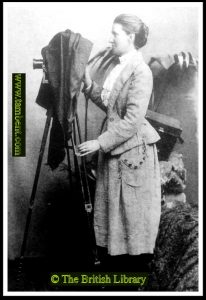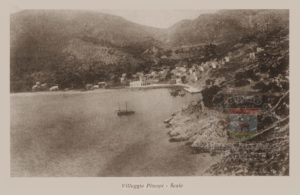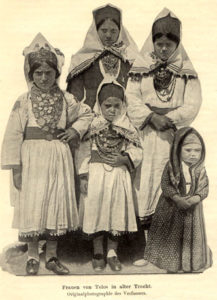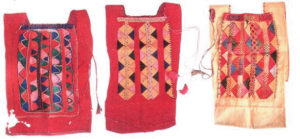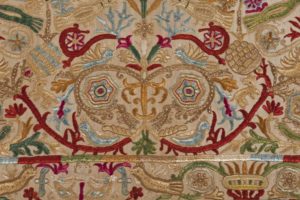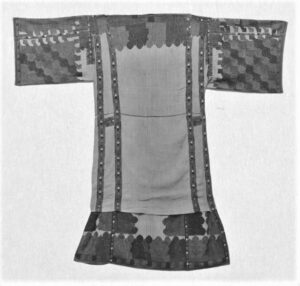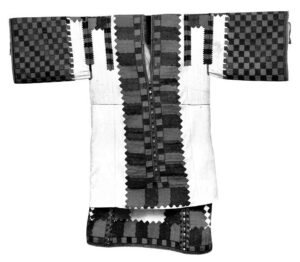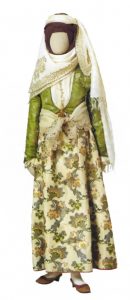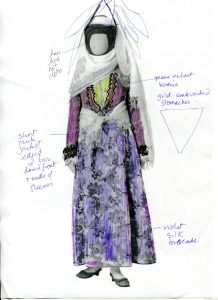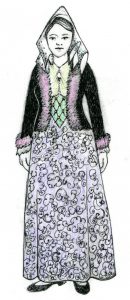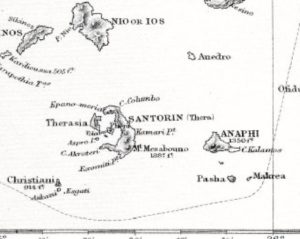
VIDEO – Manolis Pelekis: A lament for the great tsabouna player from Anafi.
The Bent Archive has been slow with its tribute to the late Manolis Pelekis (†2019) – legendary Anafiot citizen, musician and tsabouna player; for many decades no Anafi island event (Greek Cyclades, east of Santorini) was ever complete without his plaintive accompaniment…
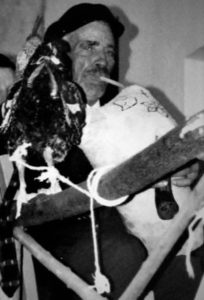
Theodore and Mabel Bent, tsabouna serenaded, travelled in the Cyclades in 1883/4, recording many occasions of musical evenings in their writings; here is Mabel in her diary in early 1884 making reference to an Anafi ball (probably hearing somewhere the skirls of the tsabouna): “After dinner a fine tall handsome niece of Matthew’s called Evtimia Chalaris [appeared], dressed in a beautiful old costume of silk, violet flowered brocade skirt, green velvet bodice, gold embroidered stomacher and a short pink satin jacket edged round the cuffs and down the front with pink fur… There was a regular ball and the Demarch danced most actively.”
The Matthew referred to is the Bent’s long-serving assistant Matthew Simos, who was born on Anafi.
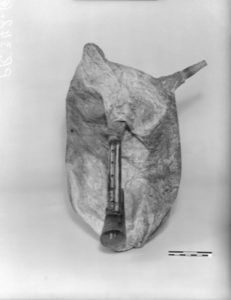
A year later, 1885, Theodore Bent acquired a tsabouna of his own – it is now on display in the Pitt Rivers Museum, Oxford. The couple were great collectors of things to make music with – wherever they travelled to. The British Museum has some of their instruments from Zimbabwe, and the Pitt Rivers also holds a lyra from Karpathos and various Cycladic pipes made from eagle bones, and other items. It’s time for a themed display with musical offerings for enthusiasts.
The main difference to the instrument played by Manolis Pelekis (over 100 years later) is that Bent’s Oxford tsabouna lacks the poignant brass cross on the chanter…
RIP Kyrie Manolis; listen to him play…
(The video of Manolis is an excerpt from a longer YouTube film you can see here.)
The tsabouna has a special place in the repertoire of the Cyclades and greater Greece; its history and etymology are fascinating. Take a look at our video exploring Theodore’s relationship with the instrument.
Coincidentally, on Santorini, just two hours east of Anafi (although it took the Bents close to twenty), you will find the musician Yannis Pantazis who crafts his own instruments and demonstrates them in his artisan workshop in Santorini, at SYMPOSION by La Ponta, in the traditional village of Megalochori.
Theodore Bent’s ‘The Cyclades, or Life Among the Insular Greeks’ is available from Archaeopress, Oxford, as are Mabel Bent’s travel Chronicles.
 Leave a comment or contact us about this article
Leave a comment or contact us about this article
